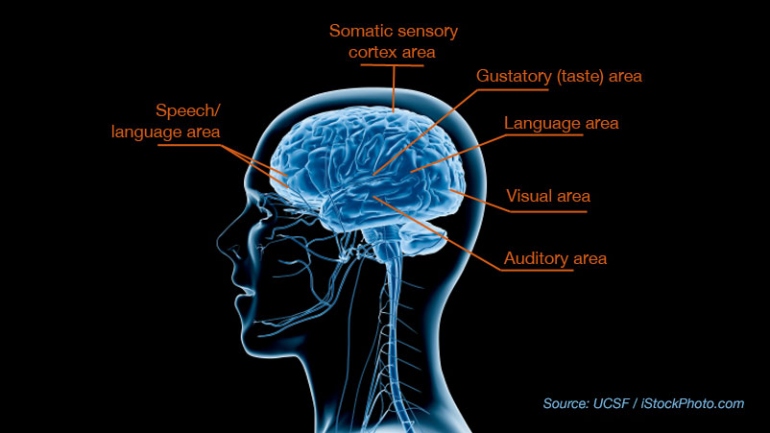For most people, they deal with and respond to situations in a relatively straightforward manner. All that is occurring in one’s environment can be easily recognized and assessed, whether consciously or unconsciously. Every so often, though, things can sometimes become overwhelming. What about those times when it all just becomes too much? Too many sights, sounds, tastes, and textures can elicit a type of panic response–usually the same sort of fight, flight, and freeze stress responses. This experience is called sensory overload. In this article we will explore sensory overload, what causes it, and how to deal with it.
Sensory overload can be brought on by a number of things. Sometimes it can be related to other existing or underlying health conditions. Autism is one of the disorders where sensory overload is a very common characteristic or trigger for those with the condition. Those with attention-deficit hyperactivity disorder (ADHD) and Posttraumatic Stress Disorder (PTSD) have also been found to have higher rates of experiencing sensory overload.
Biology Behind Sensory Overload
Sensory overload isn’t someone simply “overreacting” or blowing something out of proportion. It occurs when the brain simply cannot keep up with what is going on in one’s environment. It signals to the body that it needs to escape the situation. The brain is overwhelmed with stimuli and cannot properly prioritize one’s attention, and, as a result, relays a panic response. Even one’s own interpretation of what is occurring can become muddled.

Regions of the brain controlling different sensory inputs. Courtesy of UCSF.
Research out of the University of California San Francisco suggests that it may be possible to quantify the difference in brain structure in those that experience sensory overload. Most often, it has been associated with those with neurodevelopmental disorders. However, their research has shown that sensory processing disorders, or SPDs, may occur in as many as 5-16 of children.
Using Diffusion Tensor Imaging, researchers were able to trace the movement of water molecules in the brain. This can provide information about the quality of the white matter in the brain. Those with signal processing disorders presented abnormal white matter tracts in the area of the brain serving for auditory, visual, and tactical processes. This differed in children with ADHD or who were on the autism spectrum. The white matter abnormalities were found in different regions of the brain for those subjects. They concluded that this could indicate that “SPD may be neuroanatomically distinct”. This is an important discovery, as it sensory overload was often previously relegated to simply being a symptom of of other disorders.
How to Manage Sensory Overload
Hypersensitivity and experiencing sensory overload is outside of the control of the individual. However, steps can be taken to try to mitigate the chances of becoming overloaded, or to help someone who is experiencing sensory overload. One coping mechanism is to identify triggers and symptoms leading up to the onset of an episode. Perhaps one notices that concerts or fairs or events that draw in large assemblies of people tend to cause overload. Or maybe crowds do not pose any sort of problem, but smelling aggressive scents like strong perfume or cleansers elicit a reaction.
Once triggers are identified, steps can be taken to avoid or strategize for dealing with the environment. One should become aware and cognizant of their own needs. Taking the time to decide how to approach events that may cause an episode (for instance, knowing one has to attend a party) can be helpful for some. For others, practicing meditation can help one master calming techniques that may be of use to prevent overloads from occurring if practiced regularly. If possible, creating a home environment that is hospitable to the particular individual’s needs can help alleviate the symptoms. Reducing clutter or using weighted blankets are two suggested steps to take. All these strategies may be of help to some, while for others they may be less effective or ineffective.
What is Sensory Deprivation
On a different level, there is emerging interest in ways to deprive oneself of one or more of the senses. One way, which is becoming increasingly more common and commercialized, has been through sensory deprivation tank. Sensory deprivation tanks are a type of restricted environmental stimulation therapy. Typically, a deprivation tank will either be in a private room at a facility or inside a pod. The tank will be filled with salt water to increase buoyancy. The pod or room is often made to be soundproof.
Once someone is in the pool for a floating session, the lights will also be turned out. This effectively eliminates the senses of sight and sound. It also gets rid of the pull of gravity, as one can float in the tank. The floating session can lead to increased originality, and enhanced creativity. Studies have also found it to be effective at reducing anxiety and that it may increase the rate of recovery in athletes. Other evidence has pointed towards sensory deprivation sessions as improving focus and cognitive ability.
However, as with all things, nothing is solely without risks or disadvantages. Not everyone feels refreshed after undergoing sensory deprivation. While researchers, and some customers, have found them beneficial for some, a handful of those who have undergone the float therapy found it downright traumatic. There are anecdotes of experiencing hallucinations during their time in the tank.
Conclusion
Sensory overload affects more people than originally thought. Emerging research, like that mentioned from UCSF, confirms that. Further studies regarding the condition and ways to mitigate its effect could help a number of afflicted individuals.
Today’s post was sponsored by RPMC Lasers – a US leading provider of laser technologies.
